Time-honored Beijing is home to numerous temples, which are especially beautiful in spring. The ancient temples, either in downtown or hidden in remote mountains, that tell the vicissitudes of history are fascinating. There are various kinds of flowers including Magnolia in Dajue Temple, Peony in Tanzhe Temple and Clove in Fayuan Temple. When flowers bloom, they are colorful and stacked one on top of the other. You can feel the fragrance behind the screen.
Dajue Temple
Dajue Temple, founded in the Liao Dynasty, is a thousand-year-old temple, in which Magnolia has long enjoyed a good reputation. The appearance, color and fragrance of Magnolia in Dajue Temple are among the best in Beijing.
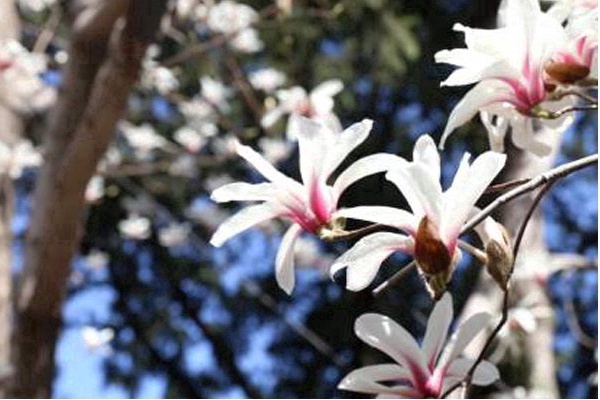
Dajue Temple’s Magnolia is as white as jade in color and graceful in posture, like an elegant fairy walking with a light step. Because it is in the mountains and blooms late. Early April is generally the best viewing period. Its flowering period is about one week, and it will be extended for several days when it is sunny. When flowers bloom, trees are glittering and translucent. The flowers are fragrant, fresh but not loud.
Magnolia in Dajue Temple dates back thousands of years. A magnolia tree with a history of more than 300 years is quietly standing in Siyi Hall. It is said that Zen Master Jialing transplanted it from Sichuan during the Yongzheng period. The tree is 5 meters high, full of flowers and low branches, just like jade butterflies fluttering around. It is called "King of Magnolia." There are tea tables and rattan chairs under the tree, and several girls dressed in Chinese clothes are performing tea arts. Tasting fragrant tea and smelling flowers is one of the elegant tastes people enjoy here.
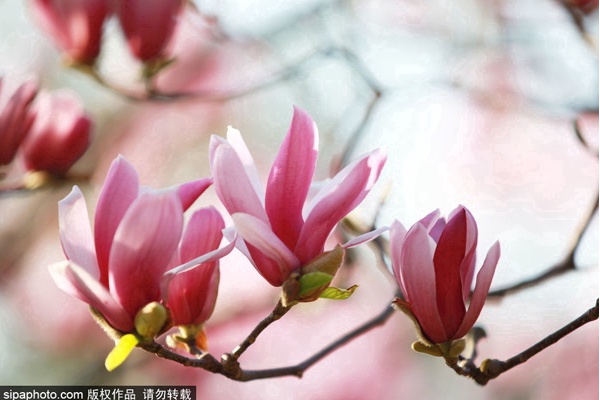
There is a characteristic magnolia beside the orchid in the ancient temple. The flower is purple and pink, and the petals are slender like fine fingers. There are also two magnolia denudata trees in the north magnolia denudata courtyard. The flowers in full bloom have delicate petals that seem to have been soaked in jade-like snow and carved out of jade. The beauty is elegant and simple.
In addition to magnolia denudata, there are patches of bamboo in Dajue Temple, and the green leaves are swaying lively shadows on the red wall. The courtyard is surrounded by pines and cypresses, springs flow from the high mountains, and a small ditch runs through the entire courtyard. Wherever you go, you can hear the gurgling sound of running water. The jagged rocks on high are spectacular. The design between the doors adopts the frame view method, making every frame in the courtyard intoxicating.
Address: No.9, Dajue Temple Road, Sujiatuo Town, Haidian District, Beijing
Tanzhe Temple
Tanzhe Temple was founded in the first year of the Yongjia period in the Western Jin Dynasty (307 A.D.). It has a history of nearly 1,700 years. People say "Tanzhe Temple was built before the founding of Beijing City." The temple was initially named "Jiafu Temple", renamed "Longquan Temple" in the Tang Dynasty, and named by the king as "Wanshou Temple" in the Jin Dynasty. In the Ming Dynasty, the old names of "Longquan Temple" and "Jiafu Temple" were restored. Emperor Kangxi of the Qing Dynasty gave the temple the name "Xiuyun Temple". However, because there was a vauclusian spring behind the temple and a silkworm thorn tree on the mountain, people have always called it "Tanzhe Temple". The temple faces south and leans against Mount Baozhu. The climate here is warm and humid. The temple boasts towering old trees, numerous pagodas and lofty halls. The entire temple is ingeniously laid out according to the terrain, strewn at random and dotted with famous bamboo flowers. The environment is extremely beautiful.
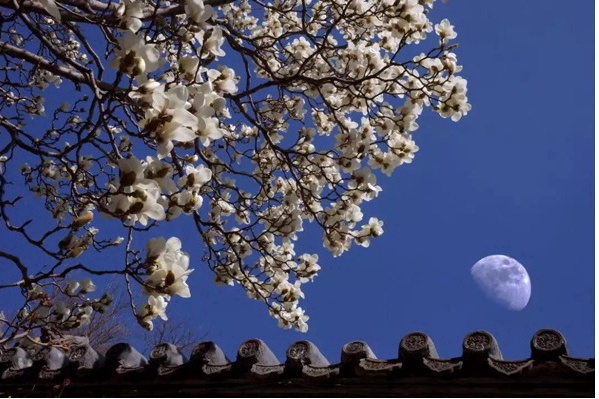
Every spring, the Tanzhe Temple scenic spot launches the "Er Qiao Magnolia Viewing Season". The two famous "Er Qiao Magnolia" trees in the temple enter the full flowering stage in late March. Meanwhile, the 300-year-old ancient jasminum floridum in the temple will also unleash its full potential. It is close to Er Qiao Magnolia and its fragrance overflows.
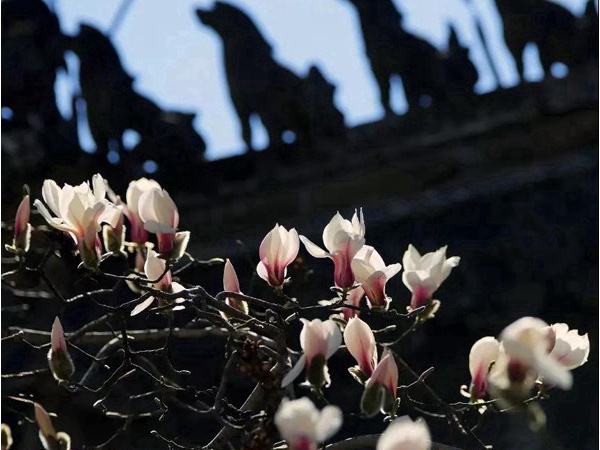
There are many varieties of Magnolia in Tanzhe Temple, including purple Magnolia, cinnabar Magnolia, white Magnolia and yellow Magnolia. In front of Pilu Pavilion in the temple, two unique Magnolia trees, known as "Er Qiao" and the "chief flower" of the Magnolia family, are especially gorgeous. It is said that these two "Er Qiao" trees were planted in the Ming Dynasty. They are over 400 years old. Over one chi in diameter and three or four zhang in height, they are famous across Beijing. Each "Er Qiao Magnolia" flower has nine petals. The flowers are huge, and, because they are purple and white, enchanted visitors often forget their way back. Some people also call "Er Qiao Magnolia" Purple Magnolia. One ancient once wrote a poem to praise it: "The best scenery in the capital city throughout the year is the Purple Magnolia beside the white stone steps". However, these two elegant and unique ancient Magnolia trees are so unique that some people compare them to the two beautiful women "Da Qiao and Xiao Qiao" in the Three Kingdoms period to highlight their elegance.
White Magnolia is common in Beijing, but purple Magnolia is rare. For example, the "Er Qiao Magnolia" in Tanzhe Temple with purple and white color is even rarer. Only in Tanzhe Temple can one see its unique beauty.
Address: Tanzhe Temple Scenic Spot, Tanzhe Temple Town, Mentougou District, Beijing
Fayuan Temple
Fayuan Temple is located in Fayuan Temple Front Street. It was founded in the 19th year of the Zhenguan period under Emperor Taizong (645 A.D.) and is the oldest temple in Beijing. It was originally called Minzhong Temple, and Emperor Qinzong of Song was imprisoned here in the Liao Dynasty. During the Qing Dynasty, Emperor Yongzheng gave it the name Fayuan Temple, which has been in use ever since.
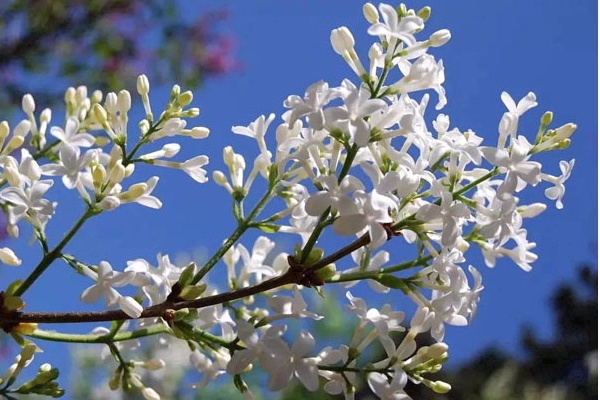
The temple faces south, basically preserving the pattern of the early architecture. The main buildings on the central axis are Shanmen, Tianwang Hall, Daxiong Hall, Minzhong Pavilion, Pilu Hall, Guanyin Hall and Sutra Pavilion, which are quite spectacular. The temple is not large; cloves are planted everywhere. In addition to lilacs and white cloves, there are cloves from Maluku in Southeast Asia. Every April, the flowers bloom as expected, just like auspicious clouds shrouding red walls, green tiles, carved beams and painted buildings. It is simply "a sea of flowers and fragrant snow."
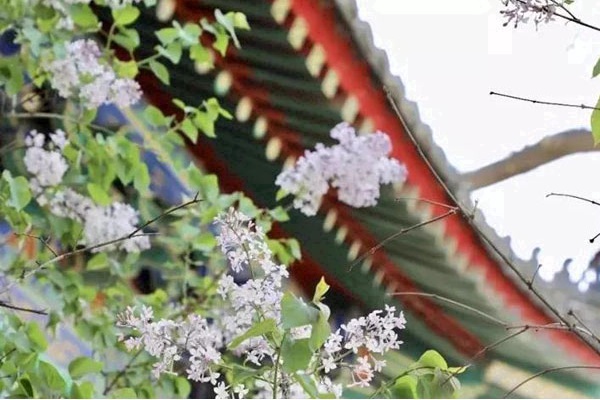
Cloves in Fayuan Temple have been famous in Beijing since the Ming and Qing Dynasties. Lin Zexu, Ji Xiaolan, Gong Zizhen and other celebrities have left footprints and poems here. Even Tagore, the Indian poet, accompanied by Xu Zhimo, came down to Fayuan Temple to watch cloves.
The cloves between Daxiong Hall and Minzhong Pavilion in Fayuan Temple are the most spectacular. Clove flowers, mainly white cloves, are distributed on both sides of the main hall. A white clove in front of the left side of the main hall is very beautiful, with the most luxuriant and beautiful flowers in bloom and the strongest fragrance. This is the most ideal place for taking photos in the temple. The plaque of Minzhong Pavilion and the stone stove in front of the pavilion, if included in the picture, would make it even more amazing.
Address: No.7, Fayuan Temple Front Street, Xicheng District, Beijing
Jietai Temple
Jietai Temple is located in Ma'an Mountain, Mentougou District, west of Beijing. It was founded in the Sui Dynasty and has a history of more than 1,400 years. It is one of the oldest royal temples in Beijing. It is famous for housing China's largest precept platform, where the highest-grade Buddhist precepts are issued, hence the name "the world's first precept platform."
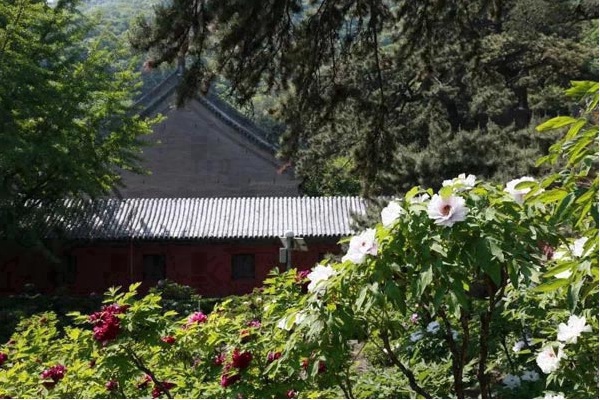
The whole temple is of primitive simplicity and quiet scenic. It not only has the magnificence of the temples in Beijing, but also the exquisiteness of the gardens south of the Yangtze River, as well as a strong religious and cultural setting and an amazing natural landscape. According to records, peonies were planted in Jietai Temple as early as the Qing Dynasty. Some of the rare peony flowers were granted by Emperor Qanlong when he visited Jietai Temple for the second time in 1764. The others were introduced by Prince Gong Yixin from the Gong Residence and widely planted in the temple. The oldest peony has a history of more than 200 years.
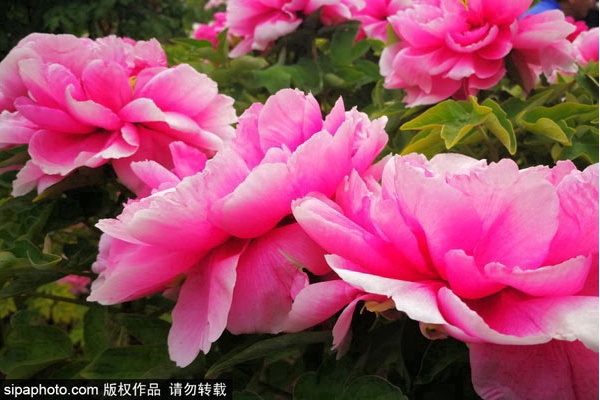
Rare peony flowers are the pride of Jietai Temple. Most of them are Melaleuca peonies with bright colors and large flowers. Besides red, white, pink and yellow peonies, there are also rare black peonies and the precious variety green peonies planted by Prince Gong Yixin himself. Among them, the largest is 1.6 meters high, with a bough diameter of 10 centimeters and a crown diameter of 2 meters. When flowers bloom, dozens of large flowers cluster in one place to present a spectacular scene. Such ancient peonies with such beautiful and gorgeous flowers are rare in other parts of Beijing.
Peony Court is another famous scenic spot in Jietai Temple. In addition, there are buildings inside the temple, such as Dazhong Pavilion, Millennium Woodcarving Maitreya Statue, Daxiong Hall, Guanyin Hall, Guandi Hall and so on, that merit a visit. Many of these buildings were built in the Liao Dynasty, and this is also the place where Liao Dynasty buildings are best preserved.
Address: Jietai Temple Scenic Spot, National Highway 108, Yongding Town, Mentougou District, Beijing
Hongluo Temple
Thousands of years ago, the ancient Hongluo Temple was built around the mountains, leaning on the majestic Hongluo Mountain in the north and standing by the beautiful Hongluo Lake in the south. The surrounding forests and gullies are shaded by towering old trees. It’s a place where the best of nature is preserved. "Three Wonderful Scenes of Hongluo Temple"—Imperial Bamboo Forest, Male and Female Gingko and Wisteria Pine are famous far and wide. Millions of bamboos and thousands of acres of ancient pines encircle the entire temple, painting a beautiful picture in which "an ancient temple rides on green waves".
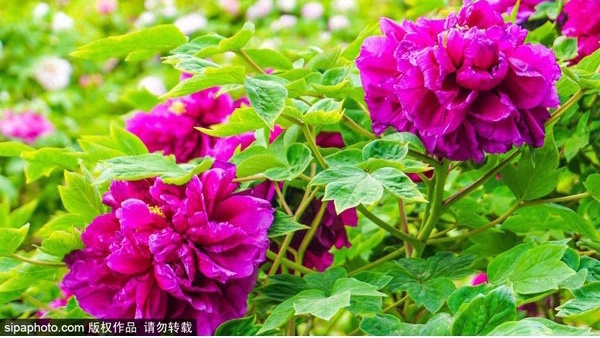
Peonies and wisteria in Hongluo Temple are very famous. Around every May Day, the peonies of Hongluo Temple will bloom as promised, which set off the shadow of the ancient temple and form a beautiful picture.
Clusters of white, pink, purple, single-layered, multi-layered peony flowers nestling among leaves compete with each other for beauty of looks. Stacked bouquets form an ocean of peony flowers. As the breeze blows, peonies quiver and ripple. Fragrant flowers come with the wind, attracting every passerby on their way.
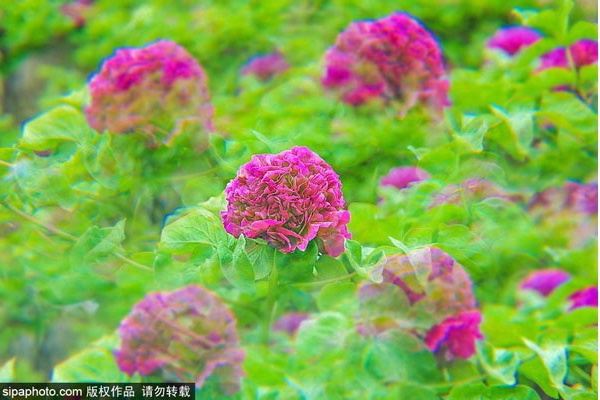
The two peony flowers in front of Sansheng Temple, which were planted 260 years ago, are still flourishing despite their old ages. Every year when dignified and graceful peonies are in full bloom, the diameter of the purple double-petal peony can reach 20cm at the maximum.
When peony flowers are in full bloom, wisteria flowers outside Hongluo Temple Business Hall and around the temple open one after the other, sending waves of fragrance and adding a touch of romance and mystery to the ancient temple.
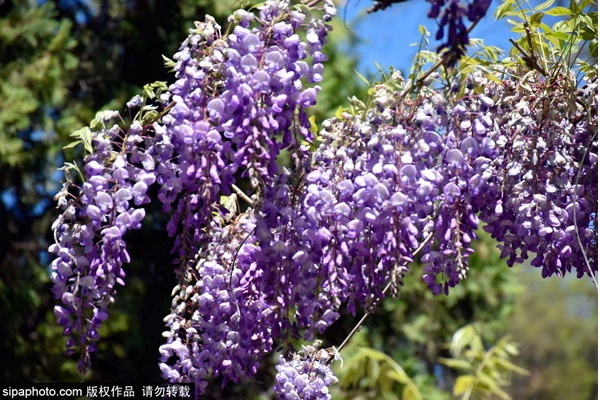
In addition to the beautiful peony and the fragrant wisteria, potted flowers such as triangle plum, jacquemontia paniculata, string of red flowers and cineraria around the gate of Hongluo Temple and on the tour routes make Hongluo Temple even more charming. The millennium temple Hongluo Temple dresses up in flowers and awaits the arrival of tourists in the colorful spring.
Address: No.2, Hongluo East Road, Huairou District, Beijing
Miaofeng Mountain
The Miaofeng Mountain Scenic Area is located in Mentougou District west of Beijing, 55 kilometers away from the urban area and covering an area of 20 square kilometers. The scenic spot is famous for its "ancient temples", "strange pines", "bizarre rocks" and "exotic flowers".
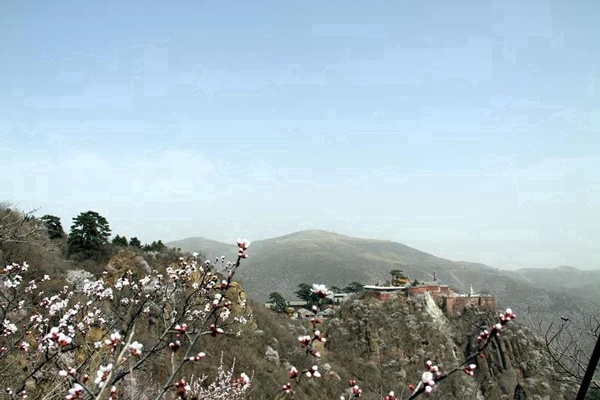
Miaofeng Mountain belongs to the Taihang Mountains. Its main peak is 1,291 meters above sea level. The mountain under a blanket of beautiful flowers and plants is high and steep. Miaofeng Mountain has seasonal landscapes such as sunrise, sunset glow, rime, mountain city, etc., thousands of mu of roses with the best quality in China, and the largest traditional temple fair in North China. Miaofeng Mountain has become one of the most iconic scenic spots around Beijing.
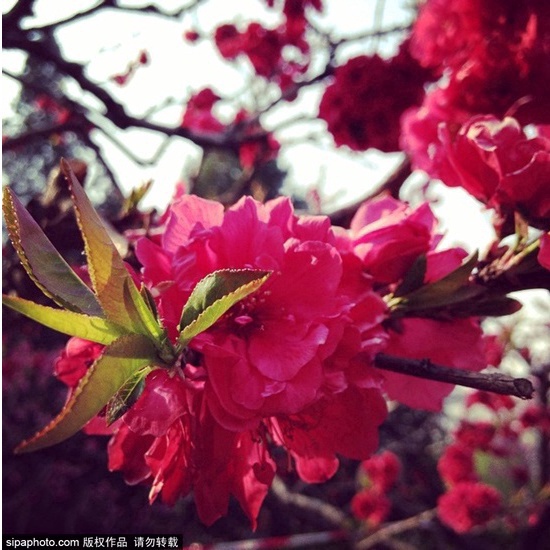
The foot of Miaofeng Mountain is spacious, with fresh air and thriving shrubs and trees. It is home to more than 600 kinds of woody plants, and more than 20 kinds of high-quality medicinal materials. All kinds of exotic flowers and different plants bloom all the year round. Mountain peach blossoms, wild cloves, mountain jasmine, azaleas, wheat straw chrysanthemum and thousands of mu of roses bloom one after another, forming a unique landscape where "picturesque mountains on all sides are covered with flowers".
Miaofeng Mountain, a blessed land, is home to famous mountains. Many sites of historic interest can be found here. Famous scenic spots include Yangshan Qiyin Temple (an imperial temple in the Liao Dynasty), Dayun Temple and one of the eight scenes in Wanping. Dishuiyan, a famous site for the "exploration of nature’s beauty," is where "Mountains and Buddhism complement each other".
Pine trees, such as guest-greeting pines, hand-joining pines, victory pines, and phoenix-like pines, stand on the cliffs of Miaofeng Mountain. Their unique shapes convey messages. Ape Stone, Top Scholar Stone and Teapot Mountain are magic and ingenious. They are perfectly combined with the pine trees in a vivid and imaginative way.
Address: Jiangou Village, Mentougou District, Beijing



